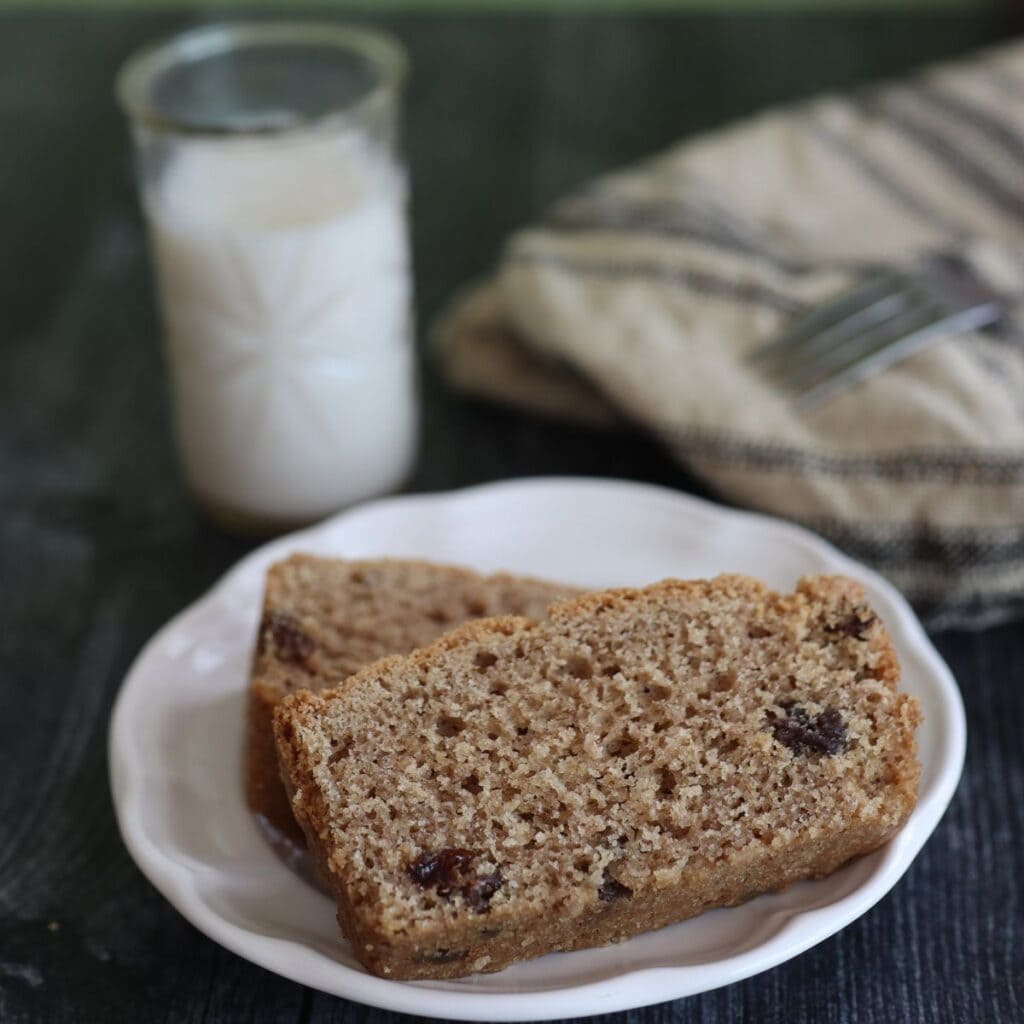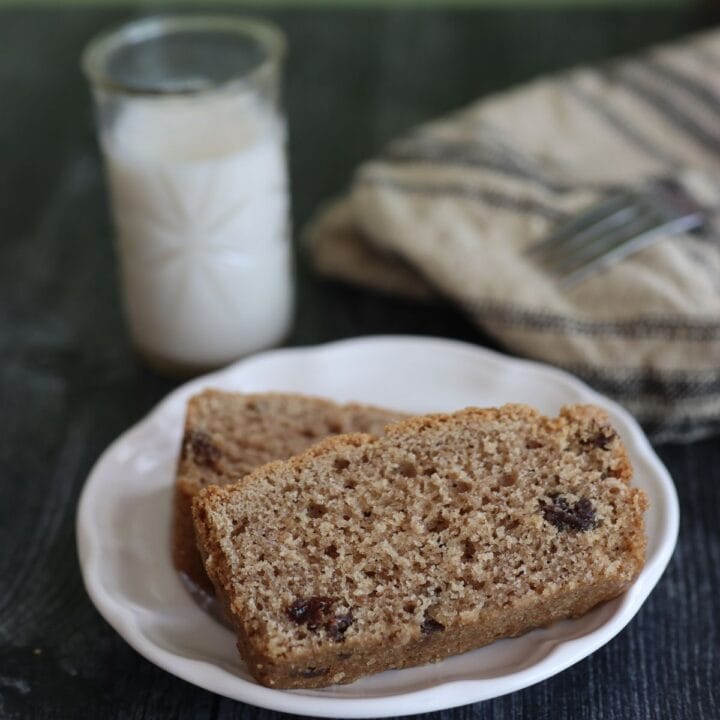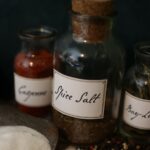This post was originally published in the 1800’s Housewife daily newsletter, on January 18, 2023. Not on the mailing list? You can join here to receive the daily recipe and cooking notes straight to your email.
This 1892 recipe for Composition Cake is lightly crackly on top, with a delicate crumb, and just the right combination of spices and raisins.

Composition Cake seems to have been, in many ways, a bit like today’s chocolate chip cookies. Every cookbook has a recipe for it, and they’re all a little different.
Let me tell you, this Composition Cake I made yesterday, from an 1892 recipe, deserves a country fair blue ribbon. It is just that good.
Slightly crackly on the top, a nice crumb throughout, and with a lovely combination of spices and raisins. I hope you enjoy it as much as I do!

As with many 1800’s cookbooks, you’ll notice how this recipe is missing some information that we’re used to relying on.
For example, “What temperature should the oven be? What type of pan should be used? Should it be greased?”
Here are a few suggestions that may be helpful if you make this recipe:
BAKING TEMPERATURE:
1800’s cake recipes rarely specify temperature, and when they do, it tends vary from “moderate” to “medium quick”. I went with a moderate 350°F for this recipe, and the result was lovely. You’ll know the cake is done when it’s golden brown, the center is set, and a toothpick (or broom straw if you’d like to be authentic) comes out clean. Baked in loaf pans at that temperature, my cake took exactly 45 minutes to bake.

MIXING THE BATTER:
I found it worked very well to beat the butter and sugar together, then add the eggs and milk, and finally the dry ingredients, which I’d already sifted together. Fold in the fruit after the batter is well mixed.
FRUIT:
Cake in the 1800’s very often included dried fruit. This was SO common, that many recipes assume you have your own preference for the amount and type of fruit you like in your cake, and that this could simply go without saying. Think, “season to taste.” The most common dried fruits used in cake were raisins, dried currants, and citron.
SPICES:
I used 1 teaspoon cinnamon, ½ teaspoon nutmeg, and ¼ teaspoon cloves. I thought this was pretty nearly perfection, but if you really love a spicy cake, you could bump those amounts up even more.

WHAT PAN TO USE:
Composition cake seems to have generally been made fairly deep, often in loaf pans. (As opposed to a thin cake like the gingerbread recipe we made last week). Two loaf pans works very well for this recipe. Grease those pans well.
Just a reminder that if you ever have a particular type of recipe you’d like to see here, just send me an email and I’ll try to find one. I’m always happy to hear from you! Until next time, Anna
📖 Recipe

Composition Cake (1892)
Ingredients
- 5 cups flour
- 2 cups butter
- 3 cups sugar
- one cup milk
- 5 eggs
- 1 teaspoon soda
- 2 teaspoon cream of tartar
- 1 cup dried fruit (raisins, currants, or citron)
- 1 teaspoon cinnamon
- ½ teaspoon nutmeg
- ¼ teaspoon cloves
Instructions
"Five cups of flour, two cups of butter, three of sugar, one of milk, five eggs, one teaspoon of soda; two of cream of tartar, fruit as you please, cinnamon, nutmeg and clove to taste."
Notes
MODERN BAKING NOTES:
BAKING TEMPERATURE: 1800's cake recipes rarely specify temperature, and when they do, it tends vary from "moderate" to "medium quick". I went with a moderate 350°F for this recipe, and the result was lovely. You'll know the cake is done when it's golden brown, the center is set, and a toothpick (or broom straw if you'd like to be authentic) comes out clean. Baked in loaf pans at that temperature, my cake took exactly 45 minutes to bake.
MIXING THE BATTER:
I found it worked very well to beat the butter and sugar together, then add the eggs and milk, and finally the dry ingredients, which I'd already sifted together. Fold in the fruit after the batter is well mixed.
FRUIT:
Cake in the 1800's very often included dried fruit. This was SO common, that many recipes assume you have your own preference for the amount and type of fruit you like in your cake, and that this could simply go without saying. Think, "season to taste." The most common dried fruits used in cake were raisins, dried currants, and citron.
SPICES:
I used 1 teaspoon cinnamon, ½ teaspoon nutmeg, and ¼ teaspoon cloves. I thought this was pretty nearly perfection, but if you really love a spicy cake, you could bump those amounts up even more.
WHAT PAN TO USE:
Composition cake seems to have generally been made fairly deep, often in loaf pans. (As opposed to a thin cake like the gingerbread recipe we made last week). Two loaf pans works very well for this recipe. Grease those pans well.


















Courtney says
I am loving this blog! Delightfully written and photographed and such a great nod to the beauty of slow living! I spy a recipe for almond crème cake on this composition cake page and I would love to hear about that one when you are up for a new baking task.
Anna says
Oh, thank you so much for the kind words! And YES, that almond cake sounds tantalizing doesn’t it? I will put that on my MUST MAKE list for this spring! Thanks for the nudge to give it a go!